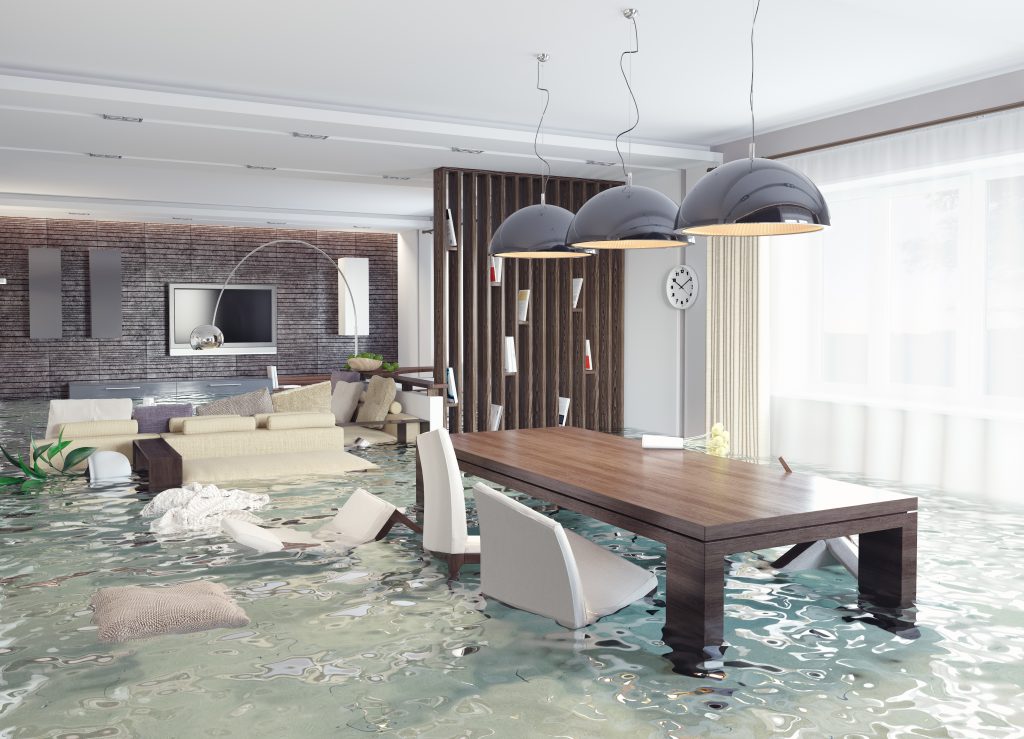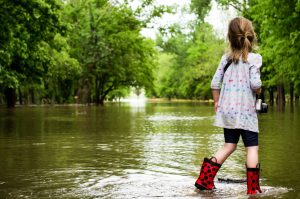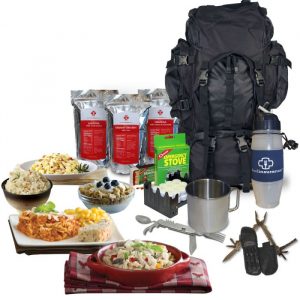Do Animals Know Something We Don’t?
I find it quite interesting, even entertaining at times, how some groups get all worked up over very minor changes in our climate. It’s as if a half a degree rise in temperature over the last 100 years somehow is both our fault and catastrophic as well. There are natural cycles that have occurred and will continue to occur for as long as the earth will exist.
 The thought that the world population is significant enough to somehow affect the climate is very hard to imagine. Yes, there are a lot of people on this planet but relative to the size of the earth, not that many. In fact, if you took all 7 Billion of the world’s population, they would fit in the state of Hawaii – not shoulder to shoulder but each on 25 square feet of space.
The thought that the world population is significant enough to somehow affect the climate is very hard to imagine. Yes, there are a lot of people on this planet but relative to the size of the earth, not that many. In fact, if you took all 7 Billion of the world’s population, they would fit in the state of Hawaii – not shoulder to shoulder but each on 25 square feet of space.
So yes, the world’s population can indeed affect specific areas and regions of the earth but there is an ebb and flow on our planet and no matter what we humans do, we are subject to that cycle. Now, it’s not one simple cycle that we must deal with. Instead, there are a vast number of cycles on this planet that affect habitability.
One cycle is the rotation of the earth itself and the correlation between it and seismic activity.
Scientists have warned there could be a big increase in the number of devastating earthquakes around the world next year. They believe variations in the speed of Earth’s rotation could trigger intense seismic activity, particularly in heavily populated tropical regions.
With all this science and intelligence on our changing planet it seems we have muddied our own natural survival instincts. Did you know that there are signals given off by our planet to warn us of impending disasters?
We have so wrapped ourselves in distractions that we cannot take advantage of these signals with our physical body. Animals still react to these signals though, and while we have muted our own senses, we can rely on theirs as a natural ‘tell’ for what’s coming.
The Earth’s Natural Signals
There are many ways that our planet and its atmosphere convey approaching disasters and changes in the weather. Some of these signals can be measured by sophisticated human instruments, but they are also picked up and acted on in the animal world.
 One of the most well-known is barometric pressure. You probably hear about this on the nightly news. Barometric pressure drops as storms approach. This is how animals know things like major storms and hurricanes are nearing. Hydrostatic pressure is similar, but affects the water pressure, and this is what sends fish to deeper water when the pressure drops enough.
One of the most well-known is barometric pressure. You probably hear about this on the nightly news. Barometric pressure drops as storms approach. This is how animals know things like major storms and hurricanes are nearing. Hydrostatic pressure is similar, but affects the water pressure, and this is what sends fish to deeper water when the pressure drops enough.
Lesser known but just as important, infrasonic impulses are another sign the earth gives us. These low vibrations are emitted by natural disasters and can be early warnings for tidal waves, earthquakes or even volcanic eruptions. They all send the same message to animals that can sense them – trouble is coming.
Animal Signals
There must have been a time when we were just as perceptive as the animals on this planet, since we have lost much of that ability. Here are some signs and signals that you can observe from the animals around you that may clue you in to when a serious situation is heading your way.
Remember, we may not always have the weatherman to tell us when a massive hurricane is bearing down – but who needs a weatherman when animals give clear signals that trouble is coming?
The Birds and the Bees
Both of these animals are going to seek shelter if a disaster is imminent. You could watch your own bees or bees from another area head into their hive. Bees will take shelter before disaster. Birds may also be migrating in a new pattern before a serious storm. Birds typically fly south in the winter and north in the summer. Use this information to look for strange migration patterns.
Henry Streby of the University of California, Berkeley, and his colleagues discovered that golden-winged warblers take off from their expected locations more than 24 hours before storms hit. In this case, the storm in question produced tornadoes that killed at least 35 people.
On the Water
A lot of fish behavior can tell you about what’s coming. It’s a great fishing trick to get out on the water just before a storm. The coming front often turns fish on and makes them aggressive. When the storm is very close the fish can shut down. Jumping fish can be a sign of electric impulses in the air a nd water, or even of pressure changes.
nd water, or even of pressure changes.
Frogs often head for higher ground, and can actually be seen climbing away from water bodies, before storms. They will also get quieter at night.
Down on the Farm
It is common for cows and other herd animals to head for higher ground before a storm. They sense the same pressure changes we discussed earlier. Horses and other pets might refuse food as well as exhibit agitated behavior. Chickens also feel the threat, and can slow or stop egg production as a result.
Man’s Best Friend
 Dogs become agitated and aggressive before a natural disaster. They may bark more and be more anxious before a major weather event or other disaster. They could be wary of certain locations in the yard or on walks that they normally frequent.
Dogs become agitated and aggressive before a natural disaster. They may bark more and be more anxious before a major weather event or other disaster. They could be wary of certain locations in the yard or on walks that they normally frequent.
Some scientists think dogs and other animals can sense the preliminary waves that signal an earthquake ahead of the destructive seismic waves. Humans can’t detect P-waves, but most animals have more acute senses than we do.
Picking up on how your dogs are acting can give you last-minute warning of an earthquake. You might not get a lot of warning, but it could be all you need to run outside where it’s safer.
Dogs are one of the best examples because you can observe them very closely for strange behavior.
A few other strange animal behaviors that could signal disaster are things like:
● Bats flying during the day;
● Lady bugs gather just before a heat wave;
● Monkeys can refuse food and become very agitated before a disaster. This is also true of human babies.
● Elephants have been seen to head for higher ground before a tsunami strikes. Tsunamis are caused by earthquakes, so it’s likely the elephants are picking up warning signs of the seismic shock.
A mixture of our pompous attitude towards our short-lived dominance of the earth, and an overwhelming reliance on technology, has put us at greater risk of falling victim to major disasters. We do silly things like filming tornadoes and storms rather than seeking shelter. We rely solely on the news to tell us when things are going wrong.
Of course, the biggest failure that has come from our muting of the earth’s warnings is our lack of preparedness. While animals stow away food for the winter and head to higher ground in times of disaster, the human animal is so bold that we hardly react till disaster is on the doorstep.
It is this terrifying lack of preparedness that forces so many of us to be the antithesis. Preppers use this unique time of massive technological advantage and resource access to build powerful systems that help them survive anything from a powerful thunderstorm to the world-changing disasters that will come.
Sources: https://www.overpopulationmyth.com/7-Billion-Alpha-USStates.html?185,232
www.askaprepper.com/how-to-understand-the-signals-from-animals-just-before-a-natural-disaster-strikes/



 So such movies simply turn potential future events into a wild roller coaster ride that temporarily scare and excite the riders. Then it is all quickly forgotten as other interesting and distracting activities present themselves. Nevertheless, I hope Hollywood keeps making such films – I really enjoy them!
So such movies simply turn potential future events into a wild roller coaster ride that temporarily scare and excite the riders. Then it is all quickly forgotten as other interesting and distracting activities present themselves. Nevertheless, I hope Hollywood keeps making such films – I really enjoy them! fires with many deaths of fire fighters reported along with millions of dollars of property damage and loss.
fires with many deaths of fire fighters reported along with millions of dollars of property damage and loss. Military experts in the field of a potential EMP attack (electromagnetic pulse caused by a nuclear explosion at high altitudes) have calculated that within one year after the national grid goes down, 80% of the U.S. population would have perished, primarily due to starvation. It wasn’t the EMP that killed them, it was being unprepared for the after-effects.
Military experts in the field of a potential EMP attack (electromagnetic pulse caused by a nuclear explosion at high altitudes) have calculated that within one year after the national grid goes down, 80% of the U.S. population would have perished, primarily due to starvation. It wasn’t the EMP that killed them, it was being unprepared for the after-effects.
 One report by the Associated Press quoted a tourist experience when the quake struck, “We were sitting there having dinner at about 7 o’clock last night, we just felt a really big sort of shaking and the lights went off and everyone just ran,” Australian tourist Kim Liebelt said as he waited with other travelers for a flight out at Lombok’s international airport.
One report by the Associated Press quoted a tourist experience when the quake struck, “We were sitting there having dinner at about 7 o’clock last night, we just felt a really big sort of shaking and the lights went off and everyone just ran,” Australian tourist Kim Liebelt said as he waited with other travelers for a flight out at Lombok’s international airport. The family should go into each room of the house and together analyze the items in the room imagining that the room was being violently shaken. What would fall, what would topple over, what would break? Make a list of these items of concern and then determine how to keep the item in place.
The family should go into each room of the house and together analyze the items in the room imagining that the room was being violently shaken. What would fall, what would topple over, what would break? Make a list of these items of concern and then determine how to keep the item in place. m falling.
m falling.
 There should be two shut off valves for the water lines that come into your home. One should be out in your yard by the street where your home line attaches to the main water line feeding all the homes on your street. You will typically need a long water key or a wrench to shut off the water at this location.
There should be two shut off valves for the water lines that come into your home. One should be out in your yard by the street where your home line attaches to the main water line feeding all the homes on your street. You will typically need a long water key or a wrench to shut off the water at this location. there was a 7.6 magnitude earthquake in Niigata, Japan. Due to the poor soil conditions, liquefaction caused major flooding and some building simply toppled over as the soil underneath them was displaced by water.
there was a 7.6 magnitude earthquake in Niigata, Japan. Due to the poor soil conditions, liquefaction caused major flooding and some building simply toppled over as the soil underneath them was displaced by water.
 dfire crossed the Sacramento River and now threatens hundreds of homes on the western fringes of the city of Redding. ‘It’s just chaotic. It’s wild. There’s a lot of fire, a lot of structures burning,’ said Scott McLean, a Cal Fire spokesman for the crews battling the wildfire.”
dfire crossed the Sacramento River and now threatens hundreds of homes on the western fringes of the city of Redding. ‘It’s just chaotic. It’s wild. There’s a lot of fire, a lot of structures burning,’ said Scott McLean, a Cal Fire spokesman for the crews battling the wildfire.” or at least 72 hours. Personalize each backpack to the needs of the individual.
or at least 72 hours. Personalize each backpack to the needs of the individual. Don’t forget the gear bags! The last thing you want to have to deal with is how to carry all the additional items out of your house. You shouldn’t have an issue with your bug-out-bags as all of your survival gear is neatly packed inside a backpack. But what about all the other miscellaneous individual items you’ve listed on your 3X5 cards. You need a way to easily pack them up and haul them out of your house.
Don’t forget the gear bags! The last thing you want to have to deal with is how to carry all the additional items out of your house. You shouldn’t have an issue with your bug-out-bags as all of your survival gear is neatly packed inside a backpack. But what about all the other miscellaneous individual items you’ve listed on your 3X5 cards. You need a way to easily pack them up and haul them out of your house.






 If you aren’t prepared, that’s okay. Today is a great day to get started. May we suggest you begin with a
If you aren’t prepared, that’s okay. Today is a great day to get started. May we suggest you begin with a 

